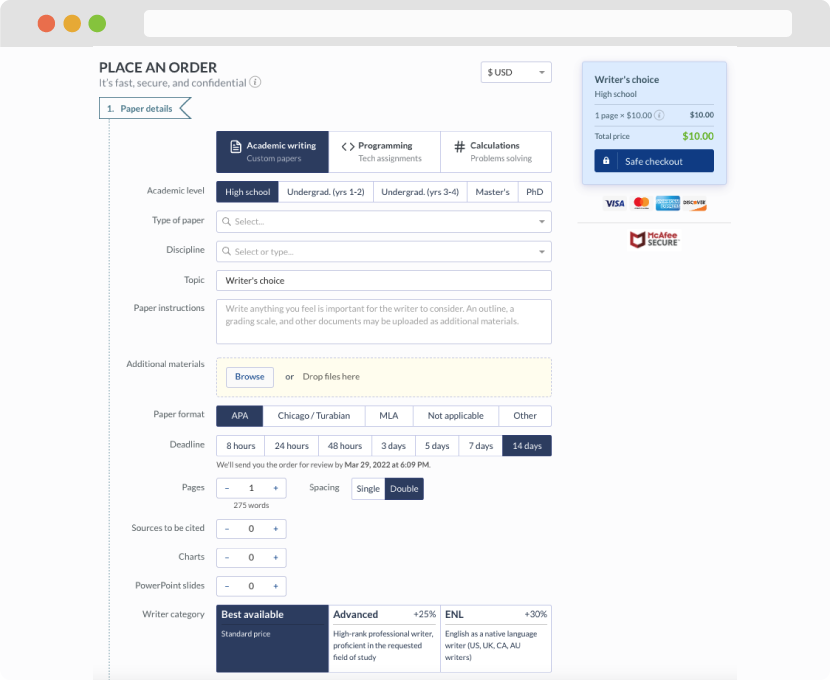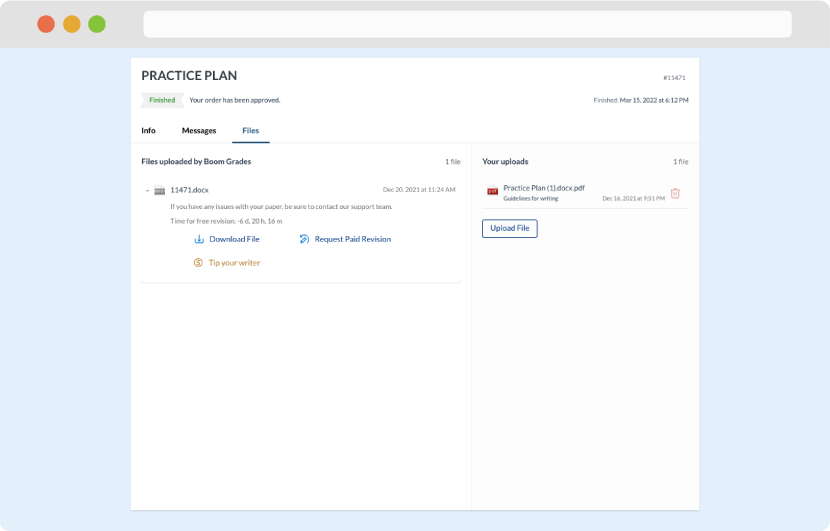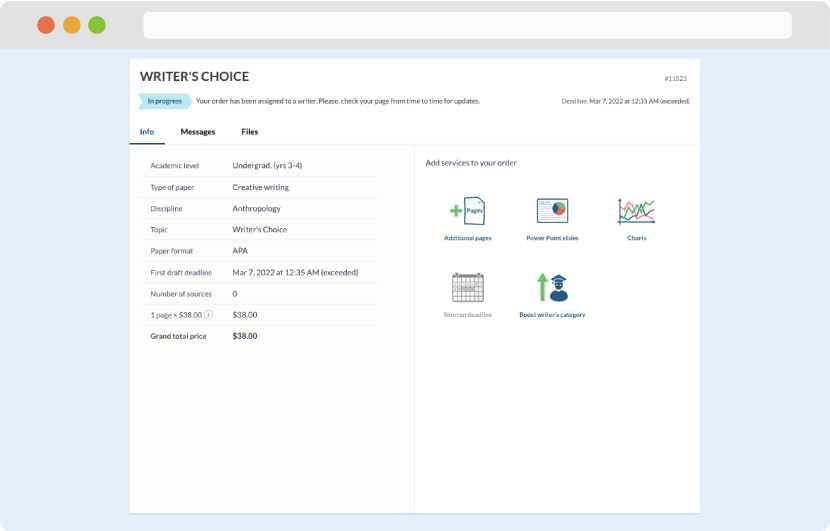[Author] 1
IE533 INDUSTRIAL APPLICATION OF STATISTICS [EXAMPLE]
1. Background
[a. Shocking story] COVID-19 is a contagious disease caused by SARS-CoV-2 virus which infected
103 million and killed 2.2 million people around the world until January 2021 (source A).
[b. KNOWN Facts] One of the serious problems in COVID-19 is “silent hypoxia”; some patients show
no symptoms even when their lungs are severely damaged. People with healthy lungs have the blood
oxygenated at a level between 95 and 100 percent, and if it drops below 92 percent, a medical doctor may
need to provide oxygen to the patient. Some asymptotic patients do not notice their hypoxia even when
the blood oxygen levels drop lower than 80 percent (source B). In order to save patients lives, it is very
important to notice the hypoxia at the early stage so that they can be admitted to a hospital at a more
salvageable point in their illness. The hypoxia can be detected by measuring blood oxygen level. Some
medical doctors propose using a pulse oximeter device which is available with 30 KWD in a drug store.
[c.Unknown thing]However, little is known about how to measure the oxygen level accurately with
pulse-oximeter.
2. Research Objective
Our team hypothesized that the measurement accuracy of blood oxygen level may be affected by the
following three factors; finger location, exertion level, and holding of breath. Our research objective was
to test the above hypotheses with design of experiments method.
3. Methodology
a. Research Hypothesis
We hypothesized that the three main factors (finger location, body movement, and breathlessness)
as well as their interactions factors may affect the blood oxygen level (Table 1).
Table 1 Hypotheses in this experiment
Description Null Hypothesis Alternative Hypothesis
Factor-A: The finger
location may affect the
oxygen
level
𝜇𝑀𝑖𝑑𝑑𝑙𝑒𝐹𝑖𝑛𝑔𝑒𝑟
= 𝜇𝑇ℎ𝑢𝑛𝑏 𝐹𝑖𝑛𝑔𝑒𝑟
𝜇𝑀𝑖𝑑𝑑𝑙𝑒𝐹𝑖𝑛𝑔𝑒𝑟
≠ 𝜇𝑇ℎ𝑢𝑛𝑏 𝐹𝑖𝑛𝑔𝑒𝑟
[Author] 2
IE533 INDUSTRIAL APPLICATION OF STATISTICS [EXAMPLE]
Description Null Hypothesis Alternative Hypothesis
Factor-B: Breathlessness
may affect the oxygen level
𝜇𝑁𝑜𝑟𝑚𝑎𝑙 = 𝜇𝐵𝑟𝑒𝑎𝑡ℎ𝑛𝑒𝑠𝑠 𝜇𝑁𝑜𝑟𝑚𝑎𝑙 ≠ 𝜇𝐵𝑟𝑒𝑎𝑡ℎ𝑛𝑒𝑠𝑠
Factor-C: Body
movement
level may affect the oxygen
level
𝜇𝑁𝑜𝑀𝑜𝑣𝑒𝑚𝑒𝑛𝑡
= 𝜇𝑀𝑜𝑣𝑒𝑚𝑒𝑛𝑡
𝜇𝑁𝑜𝑀𝑜𝑣𝑒𝑚𝑒𝑛𝑡
≠ 𝜇𝑀𝑜𝑣𝑒𝑚𝑒𝑛𝑡
Factor AB Interaction:
Finger location and body
movement
No AB interaction There is AB interaction
Factor AC Interaction:
Finger location and
breathlessness
No AC interaction There is AC interaction
Factor BC Interaction:
Body movement and
breathlessness
No BC interaction There is BC interaction
b. Methods for measuring response variables
The experiment apparatus is shown in the Table-2. The blood oxygen level was measured by a
pulse oximeter.
Table 2 Experiment apparatus
Response Variable Measurement Tool
A pulse oximeter used for measuring the blood
oxygen level.
Beurer PO30 Pulse Oximeter
c. Method for controlling Independent Variables
[Author] 3
IE533 INDUSTRIAL APPLICATION OF STATISTICS [EXAMPLE]
The control methods for independent variables are shown in Table 3. In the finger position factor, the
low-level condition was to use the pulse oximeter at the middle finger while the thumb was used for
the high level. In body movement factor, the low-level condition was to rest before the measurement
while the high level condition required a subject to walk for 10 minutes with treadmill machine. In the
breathing factor, low-level condition was to breath normally while the high-level condition required
the subject to hold breathing for 30 seconds.
Table 3 Independent Variables
Independent Variables Low Level (-) High Level (+)
A: Finger Position factor
Thumb
Middle
Finger
B: Breathing Factor
Breath normally
Breathless
Hold breathing for 30 seconds
C: Body Movement Factor
Rest / Quiet
10 min walk
7.2km/hour pace
d. Sample size
The sample size N was determined with Minitab. Because there are three factors, a 23 full
factorial design was chosen. The power analysis showed 𝑛 = 2 replicates with the following
condition: Type-I error 𝛼 = 0.05 , Type-II error 𝛽 = 0.2 , standard deviation 𝜎 = 0.71 , and
practical significant difference of 3 percentage of blood oxygen level. The total sample size was
𝑁 = 2 × 23 = 18.
[Author] 4
IE533 INDUSTRIAL APPLICATION OF STATISTICS [EXAMPLE]
e. Design of Experiment
A two-levels three factors factorial design was prepared (Table 4).
Table 4 Two-Levels Three Factors Factorial Design
Standard
Order
Randomized
Order Blocks
Finger
A
Breath
B
Move
C
2 1 1 1 -1 -1
5 2 1 -1 -1 1
3 3 1 -1 1 -1
4 4 1 1 1 -1
7 5 1 -1 1 1
1 6 1 -1 -1 -1
8 7 1 1 1 1
6 8 1 1 -1 1
11 9 2 -1 1 -1
15 10 2 -1 1 1
9 11 2 -1 -1 -1
13 12 2 -1 -1 1
14 13 2 1 -1 1
12 14 2 1 1 -1
16 15 2 1 1 1
10 16 2 1 -1 -1
4. Work plan
Our work plan is shown in the following Table (Table 5).
Table 5 Gantt Chart for our project
Monday Tuesday WednesdayThursday Friday Saturday Sunday Monday Tuesday WednesdayThursday Friday
Tasks 25-Jan 26-Jan 27-Jan 28-Jan 29-Jan 30-Jan 31-Jan 1-Feb 2-Feb 3-Feb 4-Feb 5-Feb
Choose a topic
Design the experiments
Write the first deliverable
Conduct Experiments
Statistical Analysis
Writing the second deliverable
[Author] 5
IE533 INDUSTRIAL APPLICATION OF STATISTICS [EXAMPLE]
5. Result
a. Main Effects and Interaction Plots
The measured blood oxygen level was only 1% higher on middle finger than thumb finger (Figure
1). The breathless (i.e., stop breathing) condition significantly (about 8%) lowered the blood
oxygen level (Figure 2). Body movement of 10 minutes walk lowered about 2% of the blood
oxygen level (Figure 3).
When a participant walk for 10 minutes, blood oxygen level was stable at the middle finger than
thumb finger (Figure 5). When the participant normally breath, walking 10 minutes increased the
blood oxygen level at 2.5 percent. On the other hand, when the participant stopped breathing,
walking 10 minutes significantly (8.5%) lowered the blood oxygen level.
Figure 1: Finger Position factor Figure2: Breathing Factor
Figure3: Body Movement Factor Figure4: Finger Position * Breathing
[Author] 6
IE533 INDUSTRIAL APPLICATION OF STATISTICS [EXAMPLE]
Figure 5: Finger Position * Body Move (Exercise) Figure 6: Breath * Body Move (Exercise)
b. Summary of Statistical Findings
ANOVA table is shown in Table-6. It was confirmed that breathing (B) factor had a significant effect
on the blood oxygen level (F(1,1)=841, P-value<0.05). The interaction between breathing (B) and body
movement (C) factors was also observed (F(1,1)=361, P-value<0.05). Weak effect of movement (C) main
factor (F(1,1)=81, P-Value<0.10) and an interaction of finger position (A) and movement (C) factors
(F(1,1)=81, P<0.10) were also observed. However, the finger position factor (A) was not significant. This
result was consistent to the main factor and interaction factor plots.
Table 6 ANOVA Table
Source DF Adj SS Adj MS F-Value P-Value
A Finger 1 1.125 1.125 9.00 0.205
B Breathing 1 105.125 105.125 841.00 0.022
C Movement 1 10.125 10.125 81.00 0.070
A*B 1 3.125 3.125 25.00 0.126
A*C 1 10.125 10.125 81.00 0.070
B*C 1 45.125 45.125 361.00 0.033
Error 1 0.125 0.125
Total 7 174.875
[Author] 7
IE533 INDUSTRIAL APPLICATION OF STATISTICS [EXAMPLE]
c. Scope of inference
Since our experiments were randomized, we can make casual inference. But any inference to a
larger or different population may be speculative since the subjects were recruited from our team
only.
6. Conclusion
One of the serious problems in COVID-19 is “silent hypoxia”; some patients show no symptoms even
when their lungs are severely damaged and they may die because they go to hospital when they are really
in critical condition. Some medical doctors propose using a pulse oximeter device which is available with
30 KWD in a drug store. However, little is known about how to measure the oxygen level accurately with
pulse-oximeter. Our team hypothesized that the measurement accuracy of blood oxygen level may be
affected by the following three factors; finger location, exertion level, and holding of breath.
Our experiment indicated three important points. First, there was not much difference of measured
blood oxygen level among different finger locations. Second, the pulse oximeter seems to have a
capability to detect the COVID-19 related lung problems because significant low blood oxygen level was
measured immediately after a subject stopped breathing. Third, when the participant stopped breathing,
10 minutes walking significantly lowered the blood oxygen level. This may indicate that it’s safe not to
walk when it’s hard for breathing, and it may be recommended to measure the blood oxygen level after a
person stopped body movement. Finally, this was a screening experiment. We need to collect more
samples in the future study.
7. References
a. Source-A (APA style)
b. Source-B (APA style)
[Author] 8
IE533 INDUSTRIAL APPLICATION OF STATISTICS [EXAMPLE]
Appendices
a. Obtained data table
b. Residual plots
StdOrder RunOrderBlocks A B C Finger position Stop breathing Exercise Data
16 1 2 1 1 1 Middle finger Stop Breathing for 30sec Walk for 10 minutes 88
13 2 2 -1 -1 1 Thumb Usual Walk for 10 minutes 97
10 3 2 1 -1 -1 Middle finger Usual Sitting 94
11 4 2 -1 1 -1 Thumb Stop Breathing for 30sec Sitting 93
15 5 2 -1 1 1 Thumb Stop Breathing for 30sec Walk for 10 minutes 84
9 6 2 -1 -1 -1 Thumb Usual Sitting 97
12 7 2 1 1 -1 Middle finger Stop Breathing for 30sec Sitting 93
14 8 2 1 -1 1 Middle finger Usual Walk for 10 minutes 99
1 9 1 -1 -1 -1 Thumb Usual Sitting
2 10 1 1 -1 -1 Middle finger Usual Sitting
5 11 1 -1 -1 1 Thumb Usual Walk for 10 minutes
4 12 1 1 1 -1 Middle finger Stop Breathing for 30sec Sitting
7 13 1 -1 1 1 Thumb Stop Breathing for 30sec Walk for 10 minutes
3 14 1 -1 1 -1 Thumb Stop Breathing for 30sec Sitting
8 15 1 1 1 1 Middle finger Stop Breathing for 30sec Walk for 10 minutes
6 16 1 1 -1 1 Middle finger Usual Walk for 10 minutes
Essay Writing Service Features
Our Experience
No matter how complex your assignment is, we can find the right professional for your specific task. Achiever Papers is an essay writing company that hires only the smartest minds to help you with your projects. Our expertise allows us to provide students with high-quality academic writing, editing & proofreading services.
Free Features
Free revision policy
$10Free bibliography & reference
$8Free title page
$8Free formatting
$8How Our Dissertation Writing Service Works

First, you will need to complete an order form. It's not difficult but, if anything is unclear, you may always chat with us so that we can guide you through it. On the order form, you will need to include some basic information concerning your order: subject, topic, number of pages, etc. We also encourage our clients to upload any relevant information or sources that will help.
Complete the order form
Once we have all the information and instructions that we need, we select the most suitable writer for your assignment. While everything seems to be clear, the writer, who has complete knowledge of the subject, may need clarification from you. It is at that point that you would receive a call or email from us.
Writer’s assignment
As soon as the writer has finished, it will be delivered both to the website and to your email address so that you will not miss it. If your deadline is close at hand, we will place a call to you to make sure that you receive the paper on time.
Completing the order and download